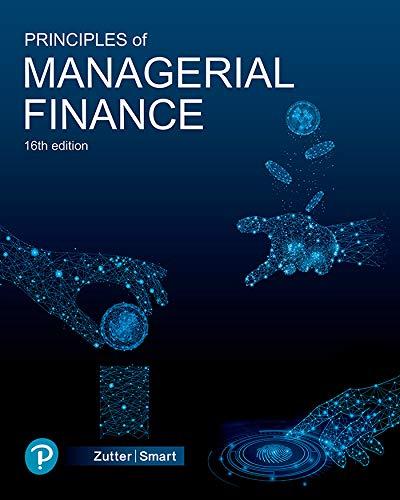please show steps using formulas and can it please be solved without using excel.
Time Year 2 Year 4 CEO Mcintosh is considering an investment option: (20 points) Cash Flow A Year o S-4000 Year 1 $-2000 $2000 Year 3 $400 $8000 Year 5 S-2000 His firm only likes investments with an IRR of 10% or more, in order to decide whether this option is acceptable, the CEO first decides to calculate the IRR of the cash flow stream. He does this by calculating the NPV(Y) of the cash flow stream given a rate of return (X) and plots the result (generally the point where this plot crosses the x axis is the IRR). The equation he plots is (Y=): His plot looks like this: Note: In the above equation, x represents Plots: (1+r) i.e. When you gain interest, you multiply your money by (1+r), this is what x represents in the above equation. 200000 15000 10000 (x from-1.7 to 5) 2000 2000 400 00 2000 250000 sogbo -S0000 (this was done in wolfram alpha: link) Unfortunately, this plot crosses the X axis at 3 places! So, it has multiple possible rates of return. These can be seen in the graph, though the exact values show up in the link. The zeroes are approximately: x= (-1.49,0.24, 1.12). The CEO wants to understand what each of these numbers mean. He knows that since xis (1+r) if he were to invest $1 and get an interest rate of X, his money after a single period would become x. So, for the first rate, i.e. -1.49, this means his $1 of money (assets), would become $1.49 of debt. Similarly, if he waits another period, it would turn into $2.22 of assets. The CEO knows this is impossible, otherwise he could get rid of all his company's debt by investing it here for 1 period. Real interest rates either shrink or grow the investment, they cannot negate it, i.e. 01. Which IRR is not possible and why? (10 points) Time Year 2 Year 4 CEO Mcintosh is considering an investment option: (20 points) Cash Flow A Year o S-4000 Year 1 $-2000 $2000 Year 3 $400 $8000 Year 5 S-2000 His firm only likes investments with an IRR of 10% or more, in order to decide whether this option is acceptable, the CEO first decides to calculate the IRR of the cash flow stream. He does this by calculating the NPV(Y) of the cash flow stream given a rate of return (X) and plots the result (generally the point where this plot crosses the x axis is the IRR). The equation he plots is (Y=): His plot looks like this: Note: In the above equation, x represents Plots: (1+r) i.e. When you gain interest, you multiply your money by (1+r), this is what x represents in the above equation. 200000 15000 10000 (x from-1.7 to 5) 2000 2000 400 00 2000 250000 sogbo -S0000 (this was done in wolfram alpha: link) Unfortunately, this plot crosses the X axis at 3 places! So, it has multiple possible rates of return. These can be seen in the graph, though the exact values show up in the link. The zeroes are approximately: x= (-1.49,0.24, 1.12). The CEO wants to understand what each of these numbers mean. He knows that since xis (1+r) if he were to invest $1 and get an interest rate of X, his money after a single period would become x. So, for the first rate, i.e. -1.49, this means his $1 of money (assets), would become $1.49 of debt. Similarly, if he waits another period, it would turn into $2.22 of assets. The CEO knows this is impossible, otherwise he could get rid of all his company's debt by investing it here for 1 period. Real interest rates either shrink or grow the investment, they cannot negate it, i.e. 01. Which IRR is not possible and why? (10 points)










